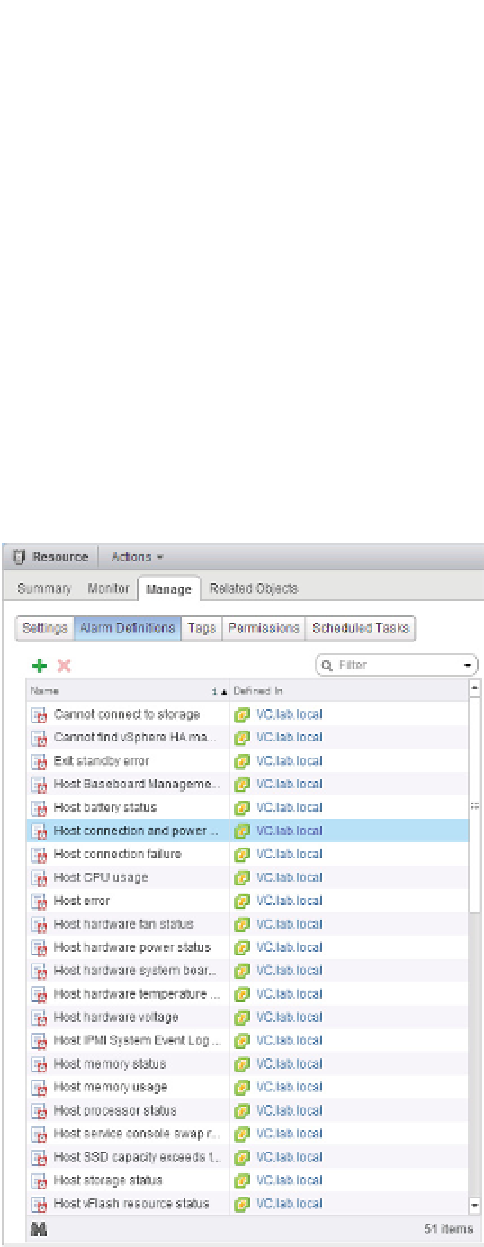Information Technology Reference
In-Depth Information
Finally, we'll take the various tools that we've discussed and show how to use them to moni-
tor the four major resources in a vSphere environment: CPU, memory, network, and storage.
Let's get started with a discussion of alarms.
Using Alarms
In addition to using the charts and high-level information tabs, an administrator can create
alarms for VMs, hosts, networks, and datastores based on predei ned triggers provided with
vCenter Server. Depending on the object, these alarms can monitor resource consumption or the
state of the object and alert you when certain conditions have been met, such as high resource
usage or even low resource usage. These alarms can then provide an action that informs you of
the condition by email or Simple Network Management Protocol (SNMP) trap. An action can
also automatically run a script or provide other means to correct the problem the VM or host
might be experiencing.
With each revision of vSphere, VMware continues to add to the number of built-in default
alarms. As you can see in Figure 13.2, the alarms that come with vCenter Server are dei ned at
the topmost object, the vCenter Server object.
Figure 13.2
h e default alarms
for objects in
vCenter Server
are defi ned on the
vCenter Server
object itself.




























